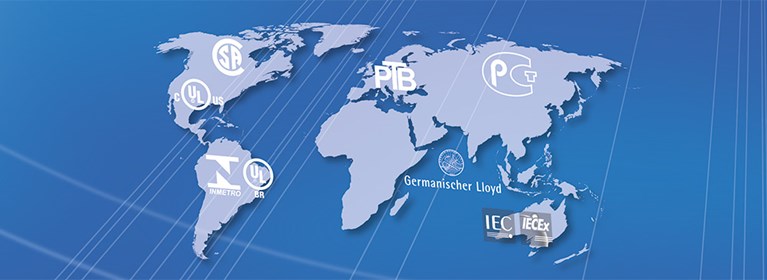Legal Principles

The requirements for operating equipment used in potentially explosive atmospheres are complex. National and international regulations, directives and standards must be taken into consideration and followed. This page only gives an insight into the legal principles. It is no substitute for individual, intensive consideration of the requirements of applicable national laws and standards.
ATEX Directives for Europe
With its ATEX product directive 2014/34/EU (ATEX 95) and ATEX user directive 1999/92/EC (ATEX 137), the European Community has established the basis for uniform explosion protection in Europe. This safety concept applies both to the production of electrical and non-electrical operating equipment as well as to the operation of this equipment in industrial plants. The lawnmakers in the individual member states have implemented the directives in the form of legal regulations.
In Germany these are, for example, the explosion protection regulation ExVO (implementation of Directive 2014/34/EU) and the Industrial Safety Regulation (implementation of Directive 1999/92/EC) as well as the Technical Rules for Industrial Safety (TRBS) and trade association rules (e.g. BGR 109 and BGR 132), trade association information publications (e.g. BGI 740) and the rules of VDI (e.g. 2263 and 3673).
The ATEX Directive 2014/34/EU stipulates the quality requirements for operating equipment for safe use in explosive areas. These invlude classification in device groups and categories, the conformity assessment procedures to be applied in each case, the responsibility of the manufacturer including EU conformity marking, the fundamental safety requirements for the development and manufacture of the explosion-proof operating equipment as well as approved quality management measures during production. The ATEX Directive 99/92/EC stipulates the duties of operators and employers to protect employees in potentially explosive atmospheres. The user must, for example, estimate the risks and classify the potentially explosive areas into zones so that the operating equipment as required by Directive 2014/34/EU can be used safely.
The International IECEx Scheme
The International Electrotechnical Commission (IEC) is responsible for the worldwide standards for electrical and non-electrical devices.
The international IECEx scheme is used for conformity assessment and certification of devices, systems and services for use in potentially explosive atmospheres. Introduced in 1996, the IECEx system supports the harmonisation of standards worldwide and the creation of uniform certificates of conformity (CoC) so as to simplify the free movement of goods globally. The European ATEX directives and IECEx regulations already largely concur regarding classes and requirements.
IECEx is of major importance outside Europe. In the countries that recognise IECEx, appropriately certified devices can be put into use without additional testing. All products from STAHL CraneSystems are available with IECEx certification.
Download
Expertise in Explosion Protection
Brochure
Language: English
Size: 21 x 25 cm
Pages: 28 pages (4 colours)


 United Kingdom - EN
United Kingdom - EN
